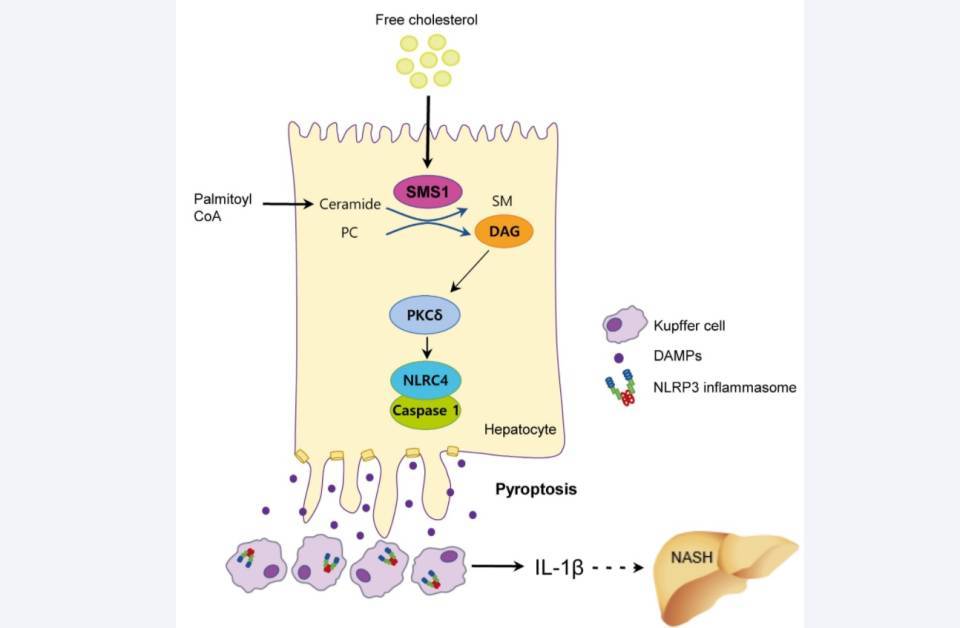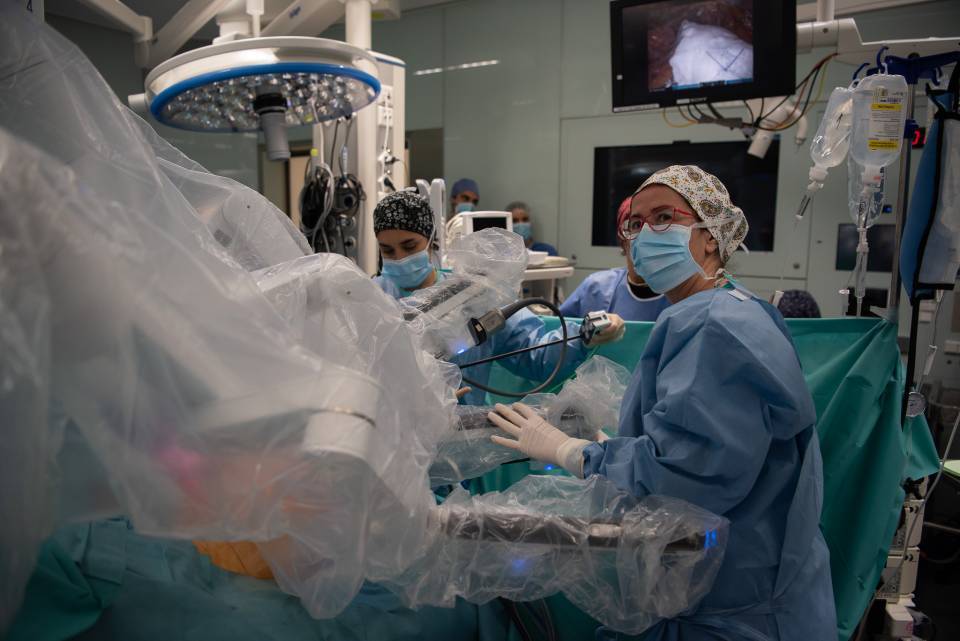Nonalcoholic steatohepatitis (NASH) is an advanced stage in fatty liver disease that can progress to cirrhosis and hepatocellular carcinoma, and is one of the most prevalent chronic liver diseases due to its association with obesity and type-2 diabetes. Although the mechanisms responsible for NASH are not fully understood, hepatocellular death represents the first step to stimulating processes that lead to the development of NASH.
Using experimental models and samples from patients with NASH, the researchers describe the induction of SMS1, an enzyme that catalyzes the synthesis of sphingomyelin and the generation of diacylglycerol, a lipid that acts as a secondary messenger. In vitro and in vivo molecular studies using genetically modified mouse models make it possible to identify a new signalling pathway initiated by SMS1 that results in the activation of PKCd and the inflammasome NLRC4, which finally leads to hepatocellular death by pyroptosis and the development of NASH.
These results are a significant step toward a better understanding of the mechanisms involved in the development of NASH and identify SMS1 as a potential new therapeutic target.
Article reference:
Sphingomyelin synthase 1 mediates hepatocyte pyroptosis to trigger non-alcoholic steatohepatitis
Eun Hee Koh, Ji Eun Yoon, Myoung Seok Ko, Jaechan Leem, Ji-Young Yun, Chung Hwan Hong, Yun Kyung Cho, Seung Eun Lee, Jung Eun Jang, Ji Yeon Baek, Hyun Ju Yoo, Su Jung Kim, Chang Ohk Sung, Joon Seo Lim, Won-Il Jeong, Sung Hoon Back, In-Jeoung Baek, Sandra Torres, Estel Solsona-Vilarrasa, Laura Conde de la Rosa, Carmen García-Ruiz, Ariel E Feldstein, José C Fernández-Checa, Ki-Up Lee. GUT doi: 10.1136/gutjnl-2020-322509




